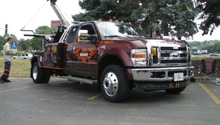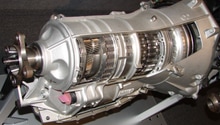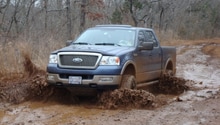F-150/F-250: Why is My Transmission Fault Light On?
Transmission troubles are usually accompanied by a warning from your truck in the form of a flashing light, or a big orange wrench. Learn how to understand what your F-150 or F-250 is telling you with this guide.
This article applies to the Ford F-150 (2004-2014) and the F-250, F-350 Super Duty (2005-2014).
The transmission fault light will probably not be a surprise when it shows up. It means that your F-150 or Super Duty's computer has discovered a malfunction in the transmission. Slipping gears, harsh shifts and other symptoms will probably be evident, too. If they aren't, then your truck is alerting you to a problem that isn't a big (read: expensive) deal yet. When your light comes on, cut down on the amount of driving you’re doing until you get the light off. Prolonged driving with transmission issues can turn a $20 fix into a $2000 fix in no time.
Step 1 - Determining you have a problem
F-150s have two different ways of notifying you of transmission trouble before it goes kaput. If the truck's computer senses something going wrong with the transmission or any of its components, the words "Transmission Fault", or a big orange wrench, will appear in your dashboard messaging center.
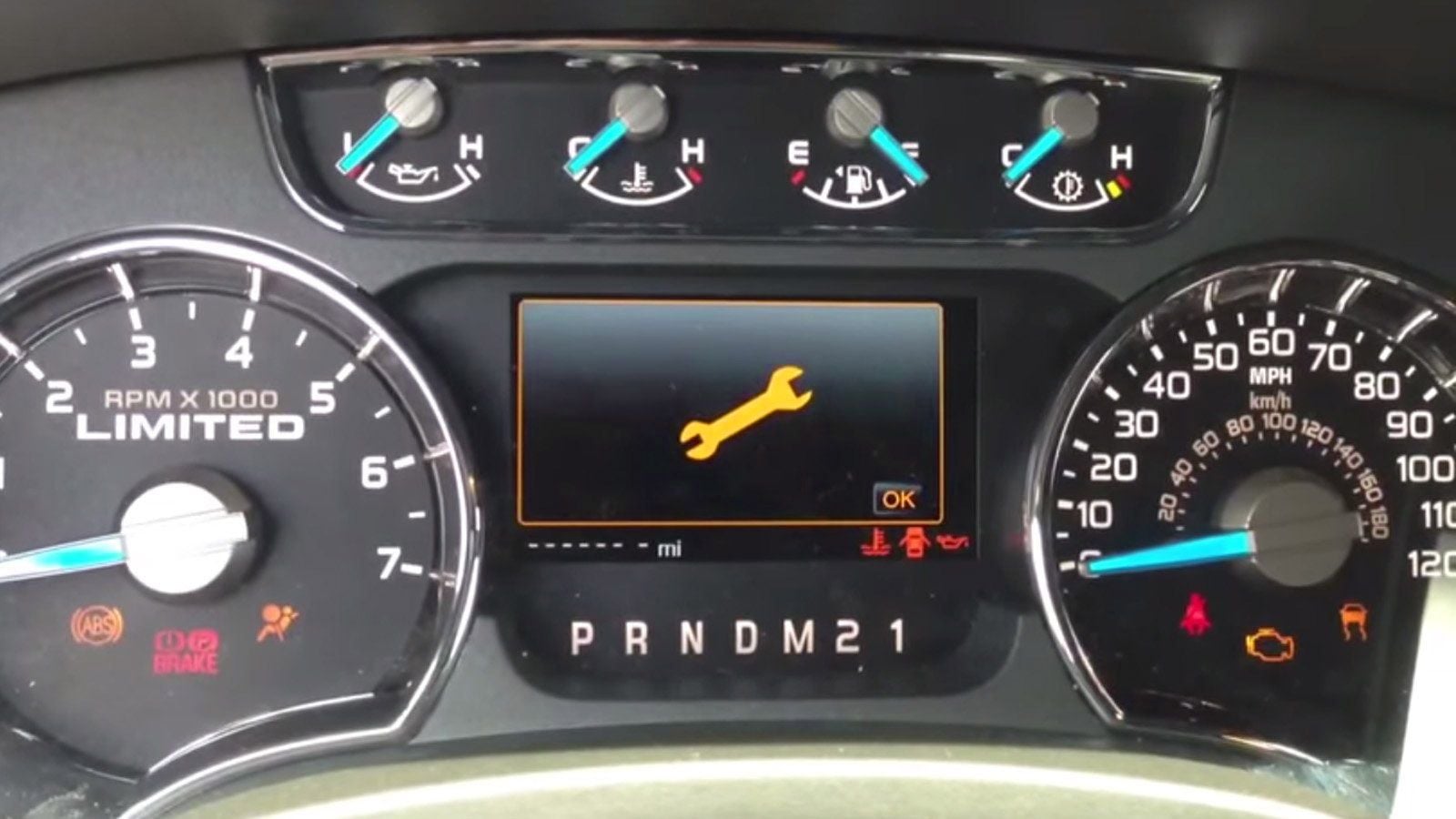
Older trucks may or may not have the messaging center function, but they will have an "Overdrive Off" light. It's normal for this light to come on if overdrive has been turned off. But, if it's flashing steadily, you have a transmission problem and diagnostic trouble codes (DTCs) waiting to be read.
-
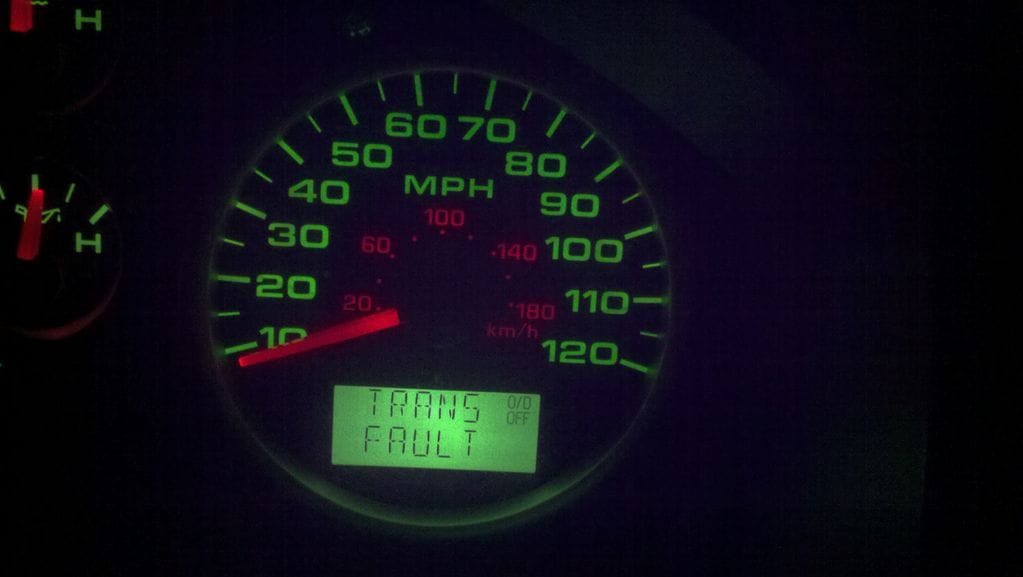
Figure 2. Earlier model trucks will let you know the transmission is malfunctioning here. -

Figure 3. If this light is flashing, you have transmission codes.
Step 2 - Pull your Diagnostic Trouble Codes (DTCs)
For those of you who don’t know, DTC stands for Diagnostic Trouble Code. When your vehicle starts malfunctioning, its computer will pick up on it and analyze the problem and store the code. On some vehicles, the code will get stored before the light even comes on. This is due to the computer trying to correct the problem for you by adjusting the way your vehicle works.
You have a few options to pull the codes from your vehicle:
- Visit the dealership (may cost money)
- Visit a mechanic (may cost money)
- Visit an auto parts store (usually free)
- Pull the codes yourself (one-time fee of purchasing an OBD/OBD II Scanner)
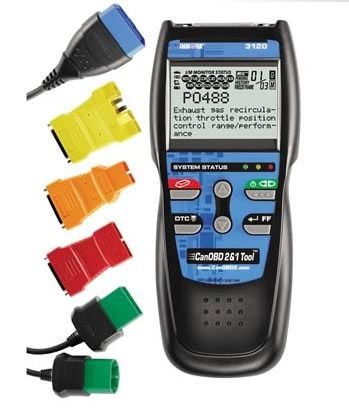
If you don’t have one but you enjoy working on your vehicle yourself, a code scanner can be a good investment. If your light comes on during the night or you’re just not close to anywhere but home, it saves you having to make an extra trip out to get the code read. Scanners run between $20-400+ depending on the quality and what other functions they may have. Note: cheaper scanners may not be able to read all codes.
F-150s, F-250s and Super Duty trucks have their OBD ports located under the steering wheel dash on the driver's side.

Step 3 - Find out what the code means
Once you have your code, you’ll need to find out what it means to able to fix your problem. Luckily, your vehicle manufacturer will have done most of the work for you by detailing just about every code there is. Below you will find the more common DTC codes for 4R75W, 4R75E, and 6R80 transmissions.
If you are unsure of which transmission you have, it should be on the sticker in the driver side door jamb. If it isn’t there you can find it by calling your dealer with your VIN number, the VIN stores all information for your vehicle.

Figure 6. The code circled above will let you know what transmission your truck has.
D - Automatic 5 speed
E - Automatic E4OD
M - 5 speed manual overdrive
T - Automatic 4 speed
U - Automatic 4R70W
Q - 4-speed automatic 4R75E
6 - Six Speed Automatic, 6R80
(Related Discussion: Decode Door Jamb Sticker - F150forum.com)
However, if your code isn’t on the images below there’s no need to lose hope yet. When trying to find information on a trouble code both Google and forum websites can be your best friend. Chances are if you have, at least one other person has had it too and gone to the internet and posted about it. As a last resort you can stop by a dealership or a mechanic, they can probably provide more insight for you, for a fee of course.
On the DTC code charts below you will see (from left to right):
- DTC code number
- The location of the issue
- Why the DTC code was triggered
- What problems the issue can/will cause
4R75E and 4R75W DTCs
| Diagnostic Trouble Code | Failing Component | Cause for Code | Symptoms |
|---|---|---|---|
| P0102, P0103, P1100, P1101 | Mass Air Flow Sensor (MAF) | The Mass Air Flow sensor in your truck isn't working correctly, causing the transmission to misbehave | Incorrect reading from the MAF could result in all sorts of transmission weirdness. Soft shifting, hard shifting, odd shift points, etc. |
| P0705, P0708 | Transmission Range sensor (TR) | TR Circuit failure | Harsh shifts. Stuck in D or 2. |
| P0712, P0713 | Transmission Fluid Temperature (TFT) | 0712 = sensor circuit grounded 0713 = sensor circuit open |
Hard shifting. |
| P0715, P0717, P0718 | Turbine Shaft Speed Sensor (TSS) | Signal from TSS dead, intermittent, on noisy | Hard shifts |
| P0720, P0721, P0722 | Output Shaft Sensor (OSS) | Signal from OSS dead, intermittent, on noisy | Hard shifting, abnormal shifting, slipping, |
| P0731, P0732, P0733, P0734, | Shift Solenoid A/B | Shift Solenoid A/B failure or internal transmission failure | No movement in 1st, 2nd, 3rd, or 4th gear. |
| P1714, P1715 | Shift Solenoid A/B | 1714 = SSA mechanical failure 1715 = SSB mechanical failure |
Solenoid is either stuck closed or open due to a physical failure. Replace them. |
| P0740, P0743 | Torque Converter Clutch (TCC) | TCC solenoid is failing or TCC is slipping excessively. | Transmission Warning light may flash. Engine might stall in D at low speeds or never engage. |
| P0741 | TCC | TCC is slipping excessively due to internal, mechanical issues. | Slipping transmission |
| P0748, P0963 | Electronic Pressure Control sensor (EPC) | EPC solenoid short | Limited torque, slipping transmission, or harsh shifting if the circuit is stuck open. |
| P1703 | Brake Pedal Position sensor (BPP) | Sensor broken, failed | Truck will not engage at less than one-third throttle |
| P1713, P1718 | Transmission Fluid Temperature | Transmission Temperature Warnings | 1713 = Continually low temperature 1718 = Continually high temperature |
| P1728 | Transmission Slip Error | Truck computer senses excessive slipping | Transmission is slipping, TCC operating erratically |
| P1740 | TCC | TCC solenoid mechanical failure | Stalls in D and 2, or torque converter never applies |
| P1741 | TCC | Excessive TCC engagement issue | Engine rushing/oscillation in 3rd gear. Slipping transmission. |
| P1742, P1743 | TCC, internal issues | TCC solenoid has failed, or the TCC itself has failed | Hard shifting |
| P1744 | TCC | Truck senses extra slippage from the TCC | Slipping transmission |
| P0960, P1746 | EPC | EPC solenoid malfunctioning (open circuit) | Harsh shifts, maximum EPC pressure |
| P0962, P1747 | EPC | EPC solenoid malfunctioning (short circuit) | Minimum EPC pressure, reduced torque, slippage |
| P1760 | EPC | EPC solenoid signal died/dead | Reduction in torque |
| P1783 | TFT | Transmission fluid temprature over 275° F | Transmission overheating |
6R80 DTCs
| Diagnostic Trouble Code | Failing Component | Cause for Code | Symptoms |
|---|---|---|---|
| P0218 | Transmission Fluid Temperature (TFT) sensor | Transmission fluid has exceeded certain temperature | Jarring lockup |
| P0562, P0563 | Battery | 2 = low voltage 3 = overvoltage |
Triggers "Limp home mode," Transmission Warning light, and maybe Check Engine Light. |
| P0605 P0613 | Transmission Control Module (TCM) | Software issue - Update your trucks computer at a the dealership | Triggers "Limp home mode," Transmission Warning light, and maybe Check Engine Light. |
| P0641 | TCM | Circuit open, voltage too high or low | Triggers "Limp home mode," Transmission Warning light, and maybe Check Engine Light. |
| P0658, P0659 | TCM | 8 = Voltage low 9 = Voltage high |
Triggers "Limp home mode," Transmission Warning light, and maybe Check Engine Light. |
| P0715, P0716, P0717 | Turbine Shaft Speed Sensor (TSS) | short circuit, noisy or lost signal, no signal | May cause Check Engine Light, will trigger Transmission Warning Light, inability to shift from 3rd, hard shifts, "slipping" transmission/No TCC engagement |
| P0720, P0721, P0722, P0723 | OSS Sensor | short circuit, noisy or lost signal, no signal | Check Engine Light, hard shifts, "slipping" transmission/No TCC engagement |
| P0731, P0732, P0733, P0734, P0735, P0729 | Transmission error | 1 = 1st gear 2 = 2nd gear 3 = 3rd gear 4 = 4th gear 5 = 5th gear 29 = 6th gear |
Missing gear. Engine flare in missed gear, hard shifts, TCIL |
| P0740, P0741 | TCC | circuit failure, circuit open | Slipping shifts, harsh shifts, no shifts, Triggers "Limp home mode," Transmission Warning light, and maybe Check Engine Light. |
| P0770 | Shift Solenoid E | circuit/solenoid failure | Triggers "Limp home mode," Transmission Warning light, and maybe Check Engine Light. |
|
P0781, P0782, P0783, P0784, P0729 |
Shift Errors | 1 = D1-2 2 = D2-3 3 = D3-4 4 = D4-5 29 = D5-6 |
These codes indicate shifting errors. You may be stuck in gear and have strange shifting from one gear to another. |
| P0960, P0961, P0962, P0963 | Line Pressure Control Solenoid | The line pressure control solenoid is shorting out. | Hard shifts, Transmission Warning Message. |
| P0972, P0973, P0974 | Shift Solenoid A | Shift Solenoid A is either shorting out, or an open circuit. Either way, the solenoid is malfunctioning | Triggers "Limp Home Mode," Transmission Warning message, and maybe Check Engine Light. |
| P0975, P0976, P0977 | Shift Solenoid B | Shift Solenoid B is either shorting out, or an open circuit. Either way, the solenoid is malfunctioning | Triggers "Limp home mode," Transmission Warning message, and maybe Check Engine Light. |
| P0978, P0979, P09780 | Shift Solenoid C | Shift Solenoid C is either shorting out, or an open circuit. Either way, the solenoid is malfunctioning | Triggers "Limp home mode," Transmission Warning message, and maybe Check Engine Light. |
| P0981, P0982, P0983 | Shift Solenoid D | Shift Solenoid D is either shorting out, or an open circuit. Either way, the solenoid is malfunctioning | Triggers "Limp home mode," Transmission Warning message, and maybe Check Engine Light. |
These tables cover most of transmission related codes that your truck will throw at you, but you might get a code that isn't on here. Alternatively, you could bring the truck into your local auto parts store and have them read the codes for you.
Related Sites
- Ford Transmission Codes - Alldata.com
- SuperMotors Edge Tuner Install - SuperMotors.net

